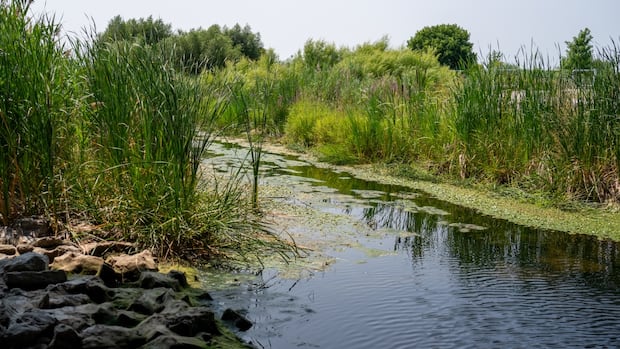Some eastern Ontario regions asked to save water amid near-drought
Low water advisories issued by some authorities
Some eastern Ontario conservation authorities are encouraging residents to use less water as parts of the region experience drought-like conditions.
Agriculture Canada monitors drought conditions across the country, ranking their severity on a scale of zero to four. According to the latest data from June 30, some parts of eastern Ontario are in a level zero drought, which is considered "abnormally dry."
The drought-like conditions can be attributed to a lack of thunderstorms and low pressure systems tracking northward, according to Crawford Luke, a meteorologist with Environment Canada.
"It's kind of resulting in this area of lower than normal precipitation amounts across much of eastern Ontario," he told CBC.
That includes an area from Ottawa all the way down to the Saint Lawrence River, he said, with some areas only receiving half the average rainfall for this time of year.
It's not looking like the dry spell will end soon either, with the latest seven-day forecast from Environment Canada predicting daily highs into the 30s and only a small chance of showers.
Low water advisories
The persistent heat and low precipitation levels have led some conservation authorities to issue low water advisories.
South Nation Conservation issued a "level one" or minor low water advisory on Aug. 1 across its jurisdiction, recommending residents reduce water use by 10 per cent. The authority manages the South Nation River watershed that flows from the headwaters north of Brockville to the Ottawa River.
"It's the first indication that there could be concerns with water supply," said Kat Watson, coordinator of early warning systems and watershed plans with South Nation Conservation.
Watson said people should limit non-essential water use, like watering gardens or using pressure washers.
The Mississippi Valley Conservation Authority — which manages the watersheds of the Mississippi, Carp and Ottawa rivers — has also raised water concerns.
It issued a minor low water advisory for the Carp River as of July. 31. On Wednesday afternoon, it was raised to a "level two" or moderate low water advisory.

Kathryn Starratt, a water resources specialist with the authority, said the moderate advisory "indicates a potentially serious problem."
The authority is encouraging residents to use less water and restrict non-essential use but Starratt says it is up to municipalities to enforce conservation or place limits on water use.
Carleton Place is under a water demand status that asks residents to conserve water to ensure the town's water distribution system can continue to meet demand in the hot and dry weather.
While there's currently no low water advisory in place for the Mississippi River, Sally McIntyre, the general manager of the Mississippi Valley Conservation Authority, says water levels on the river are below average.

"We haven't reached any sort of extreme level yet because on this river we actually have reservoirs upstream and we're able to supplement flow during drought conditions," she said.
"We're being very judicious in how we're releasing that water so that we're able to achieve target flows on the lower Mississippi [but], if we're not able to achieve target levels, we will have to move through that progression of level one, level two, level three drought."
The Rideau Valley Conservation Authority issued a minor low water advisory for the Kemptville Creek, Jock River and Lower Rideau sub-watersheds of the Rideau River watershed on July 30.
Cataraqui Conservation added a low water alert on Thursday, asking residents who draw from wells or inland lakes or streams to reduce non-essential water use, including watering outdoor plants.


